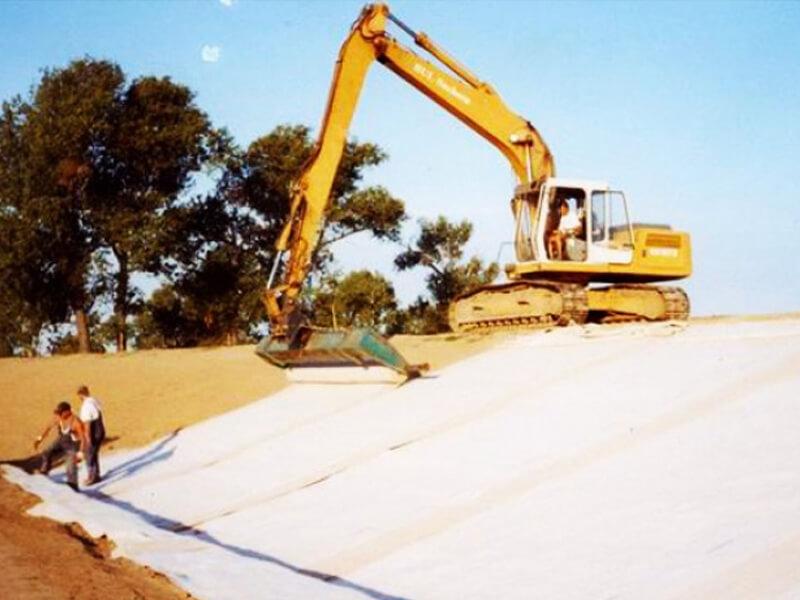General Information
The devasting flooding that took place in 2002 has led to various of dyke construction projects in order to be better prepared for future flood situations. The basic principle for the realisation of all of these refurbishing projects is the German DIN standard River Dyke, i.e. a so-called "three-zone dyke" consisting of a barrier, dyke core and a down-stream load filter.
Sealing with Bentofix®
Bentofix® geosynthetic clay liners are used as up-stream barriers for dyke structures. This 10 mm thick, needle-punched composite material made of geosynthetics and high-swellable sodium bentonite, is a cost-effective alternative to a 60 cm thick layer of clay sealing. Aside from its outstanding sealing properties.
Separation/filtration with Terrafix® and Secutex® geotextiles
To increase stability and reduce the seepage line in the scenario flood, Secutex®/Terrafix® geotextiles filters are positioned on the down-stream of the dykes as a load filter. This significantly reduces the pore water pressure in the dyke and increases stability. Because of the high stresses placed on geotextile filter stability, the nonwoven Terrafix® geotextile between the dyke body and its load filter as well as in its base surface area. This maintains the drainage performance of the load filter permanently. For dyke defence ponds and access roads it is necessary to ensure the long term performance by separating filter unstable soils with Secutex®/Terrafix® needle-punched nonwovens geotextiles. When properly dimensioned, this technique prevents the intermixing of the load-bearing layer with low subsoils.
Earth reinforcement with Secugrid® or Combigrid®.
Secugrid® is a geogrid of extruded monolithic flat bars with welded junctions used for soil reinforcement. Combigrid® geogrid; a composite combination of Secugrid® geogrid and Secutex® matting. Secugrid® or Combigrid® geogrids can be used to armour surfaces or stabilise slopes, e.g. laid out in the foot-print area of load filters.
Advantages
A significant advantage in using these products lies therein that settling is prevented or at least spread out more evenly. Another advantage is that incurred slope sliding forces in the affected slope area are absorbed so it is no longer a problem to design with steeper slopes that are more economical to build.
Numerous projects have successfully employed NAUE geosynthetic materials to permanently secure dykes that are capable of withstanding extreme stresses under floodwater loads.



